|
|
|
 Chrome tourmaline from Tsaniria. Chrome tourmaline from Tsaniria.
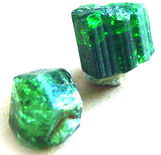
|
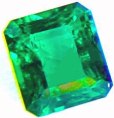 |
In 1989, Mr.Tombomana finds stones, green emerald color by moving large stones to build a tomb. A little bit later he leaves his area of Andrambali, the discovery is forgotten.
In 1992, I see a chrome tourmaline of big size in the hand of an Indian tradesman of Amboasary, 150 kilometers far from there.
Tombomana is back home in 1994, he takes advantage of beginning tourmalines research again. In October 1995, the young man is in Ampamata, -190 kilometers far from there- where he practices his job as a teacher. It is there that we meet him and it is at this period that the Tsaniria deposit is exploited. It will produce small chrome tourmalines quantities during two years.
|
|
|
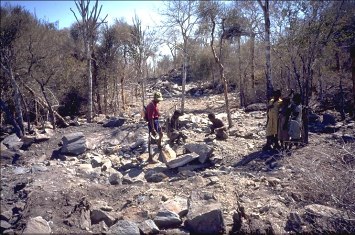
The Tsaniria occurrence in 1995.
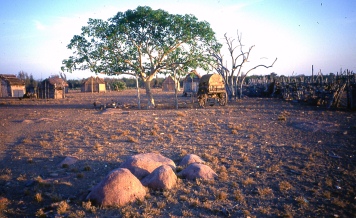
|
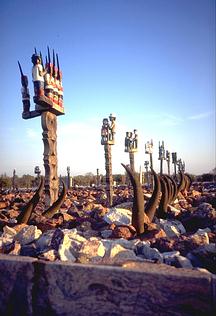 |
| Antandroy tomb. |
| The Antandroy tribe living in southern Madagascar, |
| is devoted mainly to the animals breeding, |
| especially zebus. One of its ancestral |
| habits drive them build houses increasingly smaller |
| than those of the preceding generation. On the |
| other hand, when a zebus owner die, the herd |
| is entirely sacrificed, the horns of the animals will be |
| used to decorate his luxurious and last residence. |
|
|
|
 TOURMALINE CHARACTERISTICS TOURMALINE CHARACTERISTICS |
| --------------------------------------------------------------------------------------------------------------------------------------------------------------------- |
|
 The spessartite garnet. The spessartite garnet.
|
.
|
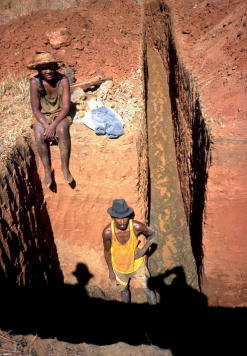
Exploitation of spessartite garnet in tanety (grounds bordering the river) in Ambohimarangitra
|
|
| The first quotations of spessarites in the area were made by the geologist Henri Besairie in 1946. |
| The French colonists exploited gold and garnet in the Besafotra river between Ankaboka and Ambohimarangitra, place located 25 kilometers from the nearest village. |
| In 1972 a bulldozer dug a track on 30 kilometers to Ankaboka in order to exploit there the spessartites to the edge of the river, at the place said Beakoho, this during one year. |
| Then, the spessartite remained forgotten until 1996, date on which it was extracted from the river and the adjacent grounds to provide the international market temporarily. |
 |
|
| Spessartite from |
| Ambohimarangitra. |
|
| SPESSARTITE |
| |
|
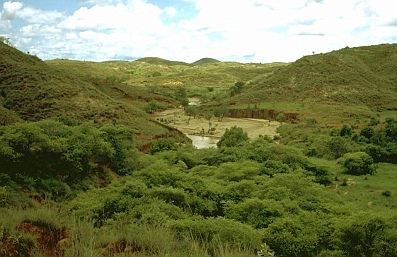 |
|
 |
The deposit of spessartite is lying behind |
| the hill of Ambohimarangitra located at the |
| center of the picture on the line of horizon. |
| (At the foreground, the Besafotra river.) This |
| deposit is exploited in alluvium and is located in |
| the geological system called "Vohibory", |
| composed mainly of gneiss with amphibole and of |
| green schists, the precious orange garnets result |
| likely from sodolitic pegmatites. |
| |
|
|
|
 GARNET DATA GARNET DATA |
| ------------------------------------------------------------------------------------------------------------------------------------------------------------------------------------------------------- |
 Liddicoatite tourmaline. Liddicoatite tourmaline. |
Rubellite, Anjanabonoina. |
Workers in Anjanabonoina. |
| Anjanabonoina. |
|
|
| --------------------------------------------------------------------------------------------------------------------------------------------------------------------- |
 Yellow orthoclase from Itrongay. Yellow orthoclase from Itrongay. |
 |
The deposit of Itrongay in the south was known for a |
| Found in eluvium, but comes from a pegmatite with |
long time to have been the single yellow orthoclase |
| diopside of a very special type, which presents the single |
producer in the world. It is into 1988 that two new |
| characteristic to be made of transparent minerals only. |
deposits were discovered in the vicinity. |
|
|
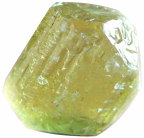
ORTHOCLASE
|
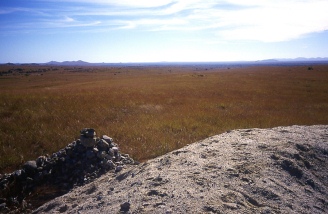 |
| ------------------------------------------------------------------------------------------------------------------------------------------------------------------------------------------ |
 Malaya garnets found in leptynite in 1996. Malaya garnets found in leptynite in 1996.
This stone shows an exceptional capacity to restore the light, thanks in particular to its high refractive index, especially under not very enlightened condition.
 
|
This day of July 1996, the leptynite, bedrock of the malaya, was so hard, that hand work appeared unreasonable to its discoverers, some samples nevertheless were extracted. |
| It is in September 1998 that an eluvial deposit was found approximately one kilometer far from the first one. The gold rush did not last, because the thickness of the ground containing the stones was modest and the deposit became quickly exhausted. In addition, the simultaneous discovery of Ilakaka sapphires attracted there people coming from all over the island at the end of 1998, the deposit was thus almost abandoned. |
 |
Malaya Garnet Discovery |
| MALAYA
 
Malaya's chemical composition is a mixture of many general Garnet types, including Grossular, Spessartine, Almandine and Pyrope. ( Mn3Al2(SiO4)3, Manganese Aluminum Silicate.) RI: 1.76 - 1.78
|
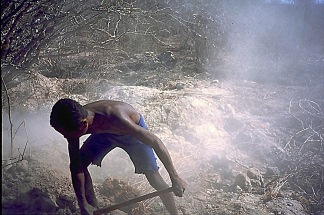 |
|
 |
Malaya garnet has been found under dry bushes and cactus. |
|
|
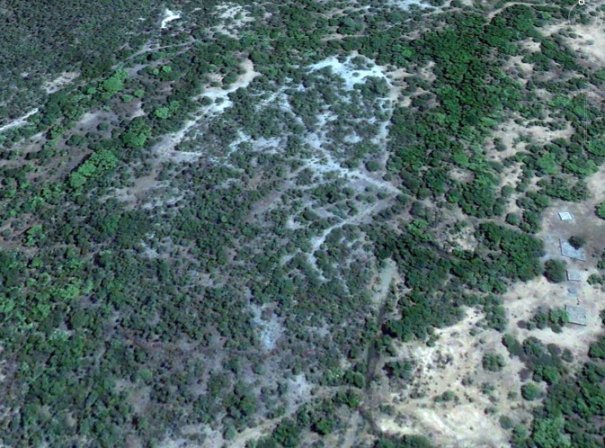 |
|
|
| Malaya garnet occurrence visible on Google Earth. |
| On the road to the Malaya. |
|
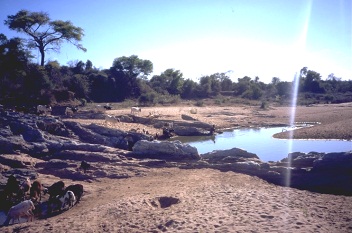 |
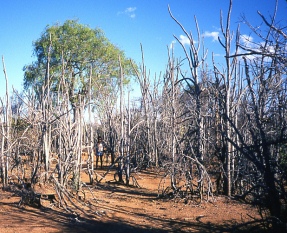 |
| ------------------------------------------------------------------------------------------------------------------------------------------------------------------------------------------- |
 Sphene or Titanite. Sphene or Titanite. |
|
|
|
|
|
 |
In Madagascar, we find gem quality sphene in |
|
| the North East, and Center Northwest. |
|
| Brown and opaque minerals are associated |
|
| with scapolite in Southeast. |
|
|
|
| Of distinctly dichroic color, |
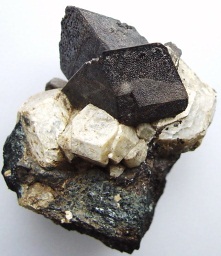 |
|
| Its refractive index is beyond |
|
| the scale of the refractometer. |
|
|
|
|
|
 TITANITE DISCOVERY TITANITE DISCOVERY |
|
|
|
|
|
|
|
|
|
|
|
|
|
| Regional geology and metamorphism. |
|
|
|
|
| Since 1920, the hypothesis of a" ancient |
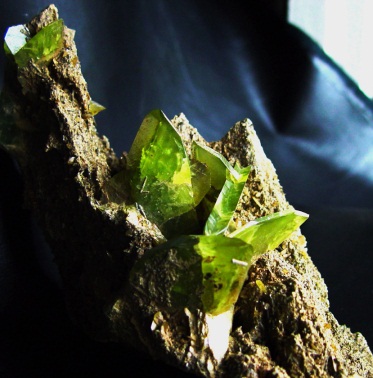 |
|
| volcanic series" was then formulated with |
|
| its major arguments. |
|
| Some consecutive reports within the |
|
| fifties brought a good description of the |
|
| main petrographic facies. |
|
|
|
| The series includes acid rock and |
|
| intermediate or basic rocks, usually shale. |
|
| The most common acid facies is a |
|
| feldspar sericite schist often pyriteous. |
|
|
|
|
|
| There are also benches of microgranites |
|
| with big euhedral orthoclase which |
|
| are probably relics of the original |
|
| formations, volcanic rocks or eruptive |
|
| acids. |
|
|
|
|
|
|
|
|
|
| -------------------------------------------------------------------------------------------------------------------------------------------------------------------------- |
 Emeralds from Morafeno and Ambodibakoly (East) Emeralds from Morafeno and Ambodibakoly (East) |
|
|
The emerald occurrence from the East coast, provided |
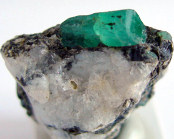 |
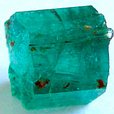 |
|
quality stones since 1975 until 1993. Their professional |
| exploitation began in the middle of the eighties. |
| The first listed discovery was reported in 1911 by the |
| geologist Levat. Then, during the colony, a settler called |
| Bourgeois discreetly exploited the green stones which |
| with the statement of the Madagascans made his |
| fortune. At the time of their departure, the settlers who |
|
worked emerald mines in the area, warned the natives |
| The emeralds of this area are located in the geological |
against the bad spirits which could be in the holes. Thus, |
| group called Ampasary. (silico - aluminous and calco - |
the gems slept within 15 years. |
| magnesian series) note the abundance of gneisses and |
|
| mica schists, heterogeneous migmatisation of épibolite |
|
| type. |
|
| The bed rock of the emeralds is a biotite mica schist |
 |
The area of Kianjavato, village located near |
| crossed by talc and chloritoschist, metamorphized |
the emerald mines, is in what it remains of the |
| by the contact of a close mass of granite containing |
rain forest of the East coast. |
| These hyperacides intrusions gave beryllium oxide, |
|
| alumina and silica thus source of beryllium, they are |
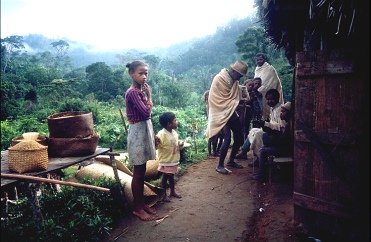 |
| located near ultrabasic rocks in particular the |
| serpentine ones, green biotic schists, source of the |
| necessary chromium contribution. The calco - |
| magnesian serie results in gneisses more or less |
| migmatic, with diopside, garnet, calcite, sphene, and |
| sometimes scapolite, more rarely by pyroxenites |
| wernerites and limestone. |
|
| The silico - aluminous serie is presented in the form |
| of quarzites at sillimanite, with or without graphite. |
| This serie is located preferably at the base of the |
| group. |
|
|
|
|
 |
Visit the emerald forest. |
GEM ADVENTURE ( Novel ) |
|
 |
|
|
|
|
|